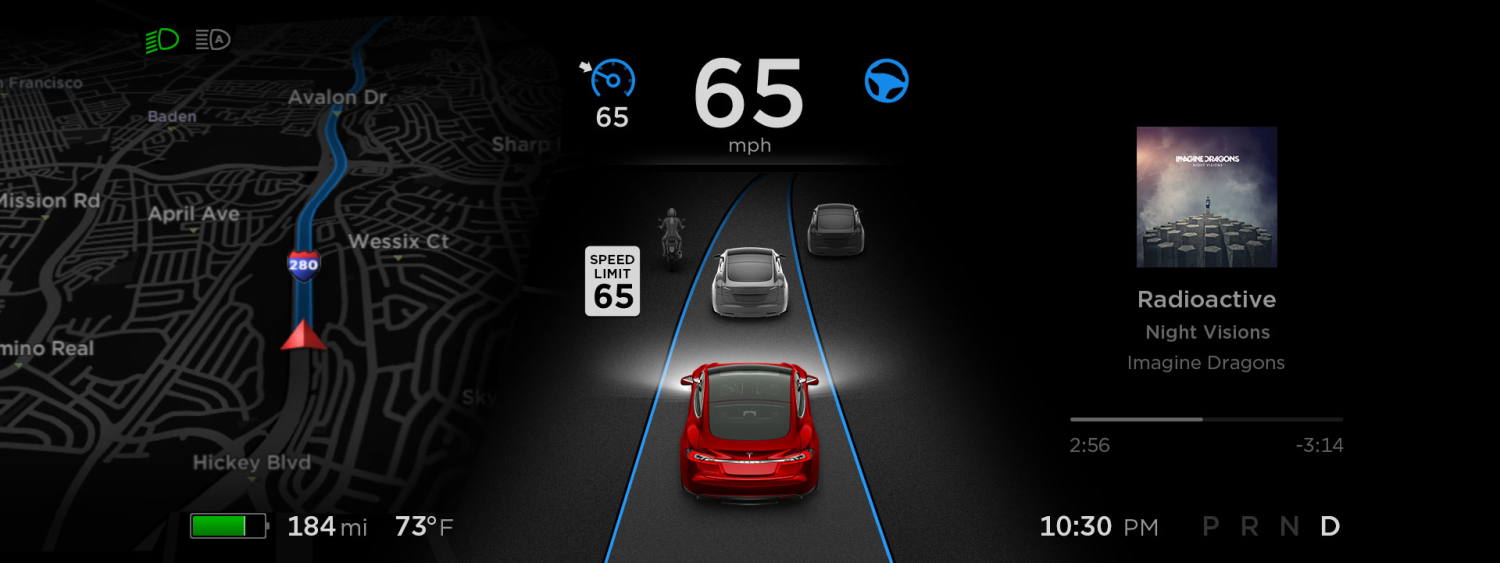Tesla on Wednesday said all new vehicles that come off the assembly line - including the Model 3 - will include the necessary hardware to enable full self-driving capabilities at a level of safety that's substantially greater than that of human drivers.
The hardware in question includes eight surround cameras with 360-degree visibility around the vehicle at a distance of up to 820 feet. Vehicles will also come equipped with a dozen updated ultrasonic sensors that'll complement the cameras, allowing for the detection of both hard and soft objects at nearly twice the distance as has previously been possible.
Furthermore, vehicles will come equipped with front-facing radar with enhanced processing that'll allow Tesla vehicles to see through fog, heavy rain, dust and even a vehicle ahead of it.
Tesla has employed a new onboard computer that affords more than 40 times the computing power of its previous system. This new computer will be responsible for processing data from the cornucopia of sensors that upcoming cars will utilize.
Having the hardware onboard and being able to actually use it, however, are two very different things.
Tesla notes that before activating the new features, they will need to further calibrate the system using millions of real-world driving miles in order to make the system as safe as possible. During this time, vehicles with the new hardware will temporarily lack some features that are already on today's cars like automatic emergency braking, active cruise control, lane holding and collision warnings. Once the features are validated on the new hardware, they will be re-enabled via over-the-air updates.
Tesla didn't say how long it would be before full autonomy would be available to vehicle owners.
